PON1 (Paraoxonase 1)
Gene description PON1 is responsible for detoxifying organophosphate pesticides, nerve gasses and various drugs (R). PON1 has a role in healthy ageing (R) and helps protect against bacterial infection (R), heart disease (R), stroke, diabetes, liver and kidney diseases, arthritis, eye diseases (macular degeneration), cancer and HIV infection (R). People with Autism have lower PON1 activity (arylesterase activity) (R). Gene function Hydrolyzes the toxic metabolites of a variety of organophosphorus insecticides. Capable of hydrolyzing a broad spectrum of organophosphate substrates and lactones, and a number of aromatic carboxylic acid esters. Mediates an enzymatic protection of low density lipoproteins against oxidative modification and the consequent series of events leading to atheroma formation. PON1 is responsible for detoxifying organophosphate pesticides and nerve gasses. It detoxifies lactones (such as statins), glucuronide drugs, thiolactones, aryl esters, cyclic carbonates, estrogens and lipid peroxides (oxidised lipids) (R). PON1 also protects against bacterial infection by destroying the bacterial signaling molecules that cause gram-negative bacteria to invade human tissue and form colonies, thus PON1 contributes to the bodies innate immunity (R). PON1 (paraoxonase 1) is a major anti-atherosclerotic component of HDL. PON1 is transported by HDL, which is one significant reason (if not the only reason) why having higher HDL is protective against heart disease (R). It protects against the induction of inflammatory responses in artery wall cells by destroying biologically active lipids in oxidized LDL (R). Oxidized-fats and cholesterol are the major cause of inflammation and are responsible for the initiation and/or propagation of several inflammatory diseases including heart disease and stroke, diabetes, liver and kidney diseases, arthritis, eye diseases (macular degeneration), cancer and HIV infection (R). Because of its ability to destroy oxidised-lipids, PON1 appears to play some role in all these diseases. However, the greatest research interest has been the role of PON1 in heart disease, because of its ability to remove harmful oxidized-lipids (R). PON1 has a role in healthy ageing (R). People with Autism have lower PON1 activity (arylesterase activity) (R). PON1 increases SIRT1 (R). From NCBI Gene: Microvascular complications of diabetes 5From UniProt: Microvascular complications of diabetes 5 (MVCD5): Pathological conditions that develop in numerous tissues and organs as a consequence of diabetes mellitus. They include diabetic retinopathy, diabetic nephropathy leading to end-stage renal disease, and diabetic neuropathy. Diabetic retinopathy remains the major cause of new-onset blindness among diabetic adults. It is characterized by vascular permeability and increased tissue ischemia and angiogenesis. [MIM:612633]
From NCBI Gene: The enzyme encoded by this gene is an arylesterase that mainly hydrolyzes paroxon to produce p-nitrophenol. Paroxon is an organophosphorus anticholinesterase compound that is produced in vivo by oxidation of the insecticide parathion. Polymorphisms in this gene are a risk factor in coronary artery disease. The gene is found in a cluster of three related paraoxonase genes at 7q21.3. [provided by RefSeq, Oct 2008] From UniProt: Hydrolyzes the toxic metabolites of a variety of organophosphorus insecticides. Capable of hydrolyzing a broad spectrum of organophosphate substrates and lactones, and a number of aromatic carboxylic acid esters. Mediates an enzymatic protection of low density lipoproteins against oxidative modification and the consequent series of events leading to atheroma formation. Disease association Advanced information The following transcription factors affect gene expression (R): Plasma, associated with HDL (at protein level). Expressed in liver, but not in heart, brain, placenta, lung, skeletal muscle, kidney or pancreas. Binds 2 calcium ions per subunit.
Drug-induced liver injury
Atherosclerosis
Lung Neoplasms
Neurotoxicity Syndromes
Coronary heart disease
Diabetes mellitus
Hypercholesterolemia
Organophosphate Poisoning
Male infertility
Coronary artery disease
Metabolic Syndrome X
Prostatic Neoplasms
Diabetic retinopathy
Myocardial infarction
Amyotrophic lateral sclerosis
Hyperlipoproteinemias
Inflammation
Agricultural Workers’ Diseases
Hyperhomocysteinemia
Birth weight
Rheumatoid arthritis
Hyperthyroidism
Brain Neoplasms
Occupational Diseases
Acute coronary syndrome
HYPERCHOLESTEROLEMIA, FAMILIAL
Lymphoma
Constipation
Hematologic Neoplasms
Persian Gulf Syndrome
Arteriosclerosis
Tissue specificity:
Gene Pathways:
Cofactor:
Molecular Function:
Biological Processes:
Drug Bank:
